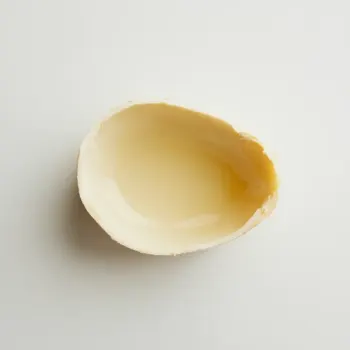Vegetable oil and lard are two types of fats used in cooking and baking, with differences in flavor, texture, and nutritional content. Vegetable oil is plant-based and neutral-tasting, while lard is animal-derived with a rich flavor, affecting their respective uses in various culinary applications.

Vegetable oil is a broad term for oils extracted from plant sources, including seeds, nuts, and fruits. Commonly used vegetable oils include canola, sunflower, and soybean oil. These oils are versatile and have a neutral flavor, making them suitable for a wide range of cooking applications.

Lard is a type of animal fat rendered from pork. It has a rich, savory flavor and is traditionally used in a variety of cuisines for frying, baking, and sautéing. Lard contributes to the flakiness of pastries and the crispiness of fried foods.
Vegetable oil and lard differ in taste, texture, and source. Vegetable oils are plant-based, have a neutral flavor, and a liquid consistency at room temperature. Lard is derived from animal fat, has a distinct savory taste, and is solid at room temperature. These differences affect their use in cooking and baking.

Your ultimate Recipe Box, Meal Planner, and Cooking Class all in one
Vegetable oil is ideal for creating moist cakes and quick breads. Its liquid form easily incorporates into batters, providing a tender crumb. For example, use it in carrot cake or banana bread for a soft texture. Lard is excellent for pie crusts and biscuits where its solid state contributes to a flaky texture. Use lard in pastry recipes like apple pie or savory quiches for a crisp, buttery crust.
Vegetable oil has a high smoke point, making it suitable for deep-frying and stir-frying. It won't impart extra flavor, so it's great for French fries or tempura. Lard is favored for frying foods when a rich flavor is desired. It's perfect for traditional fried chicken or for authentic Mexican carnitas.
Use vegetable oil for sautéing vegetables or roasting to ensure a light, non-greasy result. It's especially good for dishes where the natural flavors of the main ingredients should shine through. Choose lard for sautéing or roasting when you want to add a layer of richness to dishes like roasted potatoes or sautéed greens.
Vegetable oil is cholesterol-free and generally lower in saturated fats compared to lard. Lard contains vitamins D and E, which are not present in most vegetable oils.
| Nutrient | Lard ( per Tablespoon ) | Vegetable Oil ( per Tablespoon ) |
|---|---|---|
| Fat | 13g | 14g |
| Protein | 0g | 0g |
| Calories | 115 | 120 |
| Carbohydrates | 0g | 0g |
| Saturated Fat | 5g | 2g |
Vegetable oil is often considered healthier due to its lower saturated fat content and absence of cholesterol. However, lard contains beneficial vitamins and can be part of a balanced diet in moderation.
Yes, lard can be used for frying, and it imparts a distinct flavor that some may prefer for certain dishes.
Vegetable oils generally have a higher smoke point than lard, making them more suitable for high-heat cooking methods like deep-frying.
While you can substitute vegetable oil for lard, the texture of the pastry may not be as flaky due to the differences in fat composition.
Yes, lard adds a savory richness to dishes, which can enhance the overall taste, especially in baked goods and fried foods.